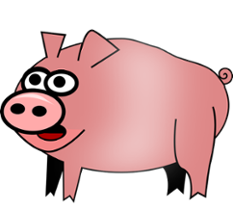Understanding the value and product-market fit of your innovation is crucial, but it's only half the work. Once you have an idea of how you can make money, the next step is to decide how to spend money to bring your innovation to market. The Innovation Institute's First Gear teams focused on answering this question as they start to put their new business ideas into motion.
Key activities, key resources, key partners, and cost structure are four crucial sections of the business model canvas (the left side); and the one that helps you to look inward at what is needed to deliver value to your customers. These include:
Key activities are the most important things you must do to ensure success. This can be software development, program design, production, supply chain management, clinical studies, and FDA approval. Plan how these activities will be accomplished and what is needed to do so (what, how many, when, with whom).

Key resources are physical, human, financial, and intellectual assets. Assess financial resources to decide how much money you need to get started and grow. Physical resources include company facilities like an office, manufacturing, and warehouse as well as products/services like supplies and raw materials. Intellectual resources include things like a patent, copyright, contract, business information, etc. Lastly, human resources are the people that help you along the way: mentors, teachers, advisors, and employees.
Key partners are defined by shared economics, mutual success/ failure, co-development/ investment, and some customers. Partnerships can be formal and informal and bound by purchases, contracts, license, joint ventures or shared planning. Having a partner reduces the list of things you need to do, the cash you need to have, and the time it takes to get your innovation to market. Partnerships increase your network of resources, customer knowledge, and possibilities, especially as a startup.
A cost structure organizes all the costs of operating a business model. The goal is to go beyond breaking even with higher revenue than costs. Fixed costs are the same every month like rent and insurance, and variable costs vary from month to month like production supplies and raw materials. You need to understand the cost of advancing your opportunity and track the metrics that are most critical to your success. Metrics include leads, customer acquisition, markets penetration, operating costs, channels, etc.
These four sections of the business model canvas help you develop a plan for how your innovation can move towards commercialization, identify the gaps you need to fill, decide how you will fill them, and measure the critical metrics.
Director of Enterprise Development Evan Facher, PhD presented these topics at the First Gear session and advises to learn from other’s mistakes and successes. He says, “Find a comparable product and understand what it did to get to the market. You can learn a lot from those that have already blazed the trail. This is especially true for regulated industries (devices, drugs) where other similar products will likely have highly public information on what the company needed to do to get to market.” Now get to work and get your innovation ready for the market!
To get help taking your Pitt innovation to market, apply for First Gear today!